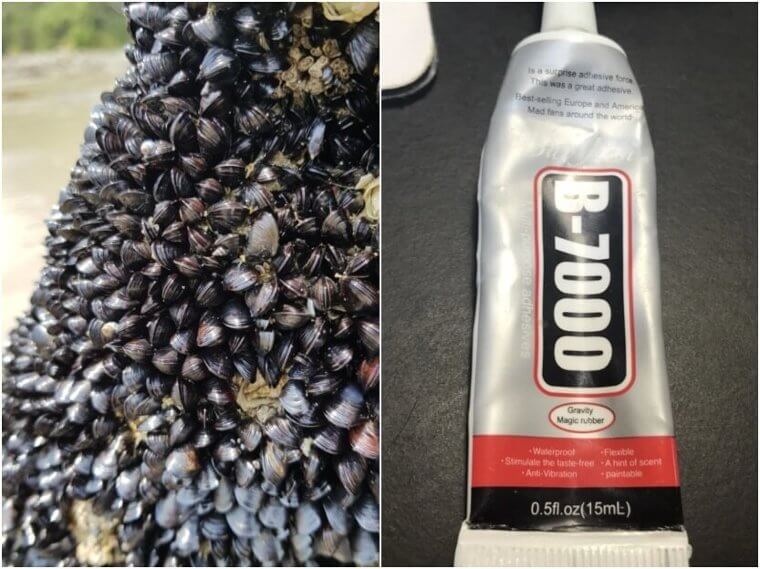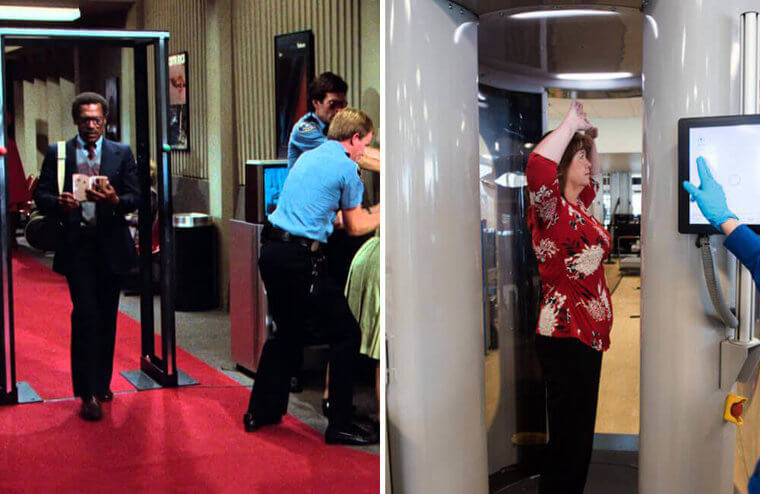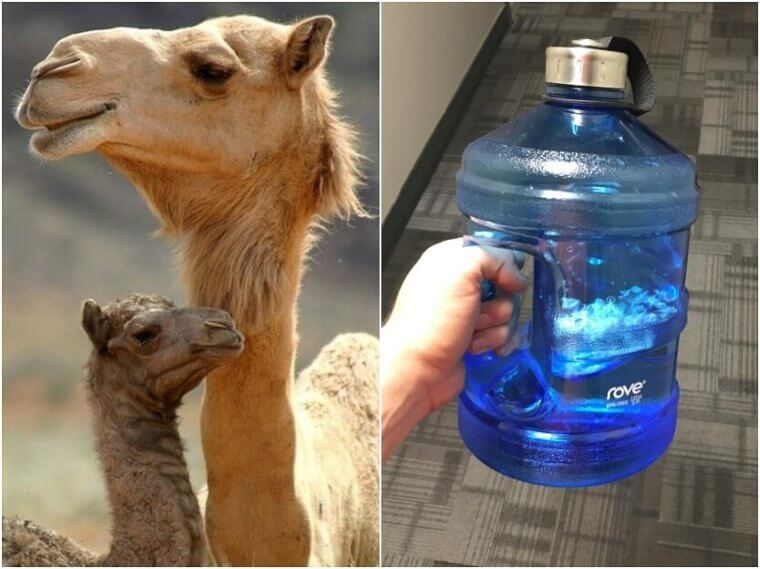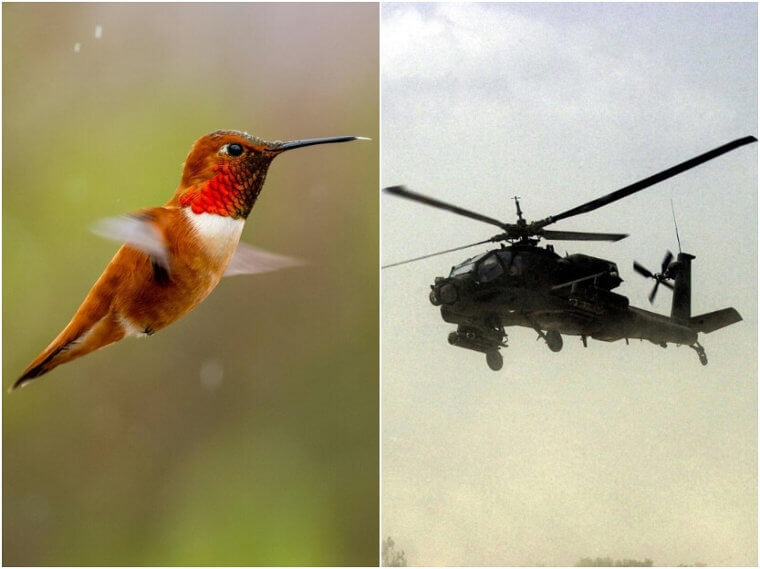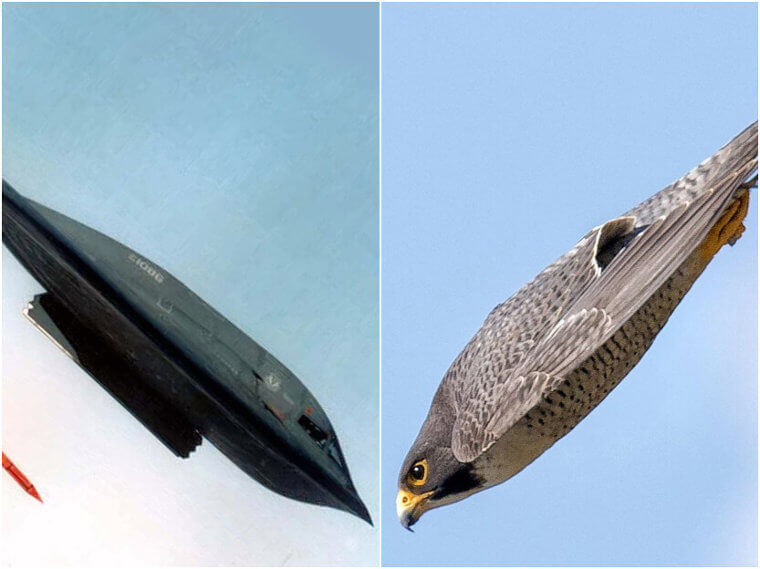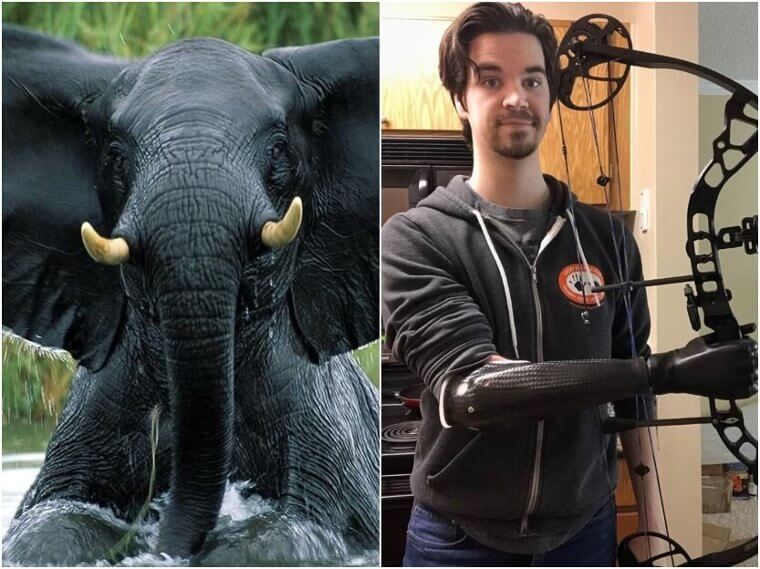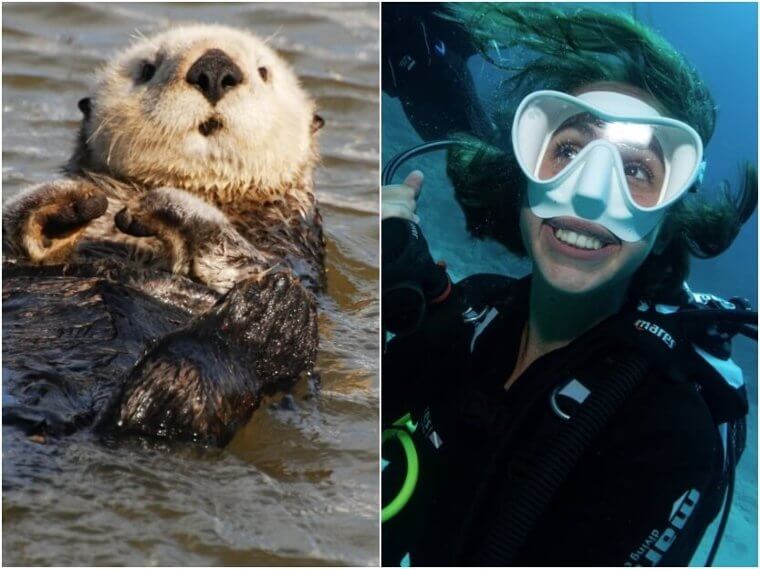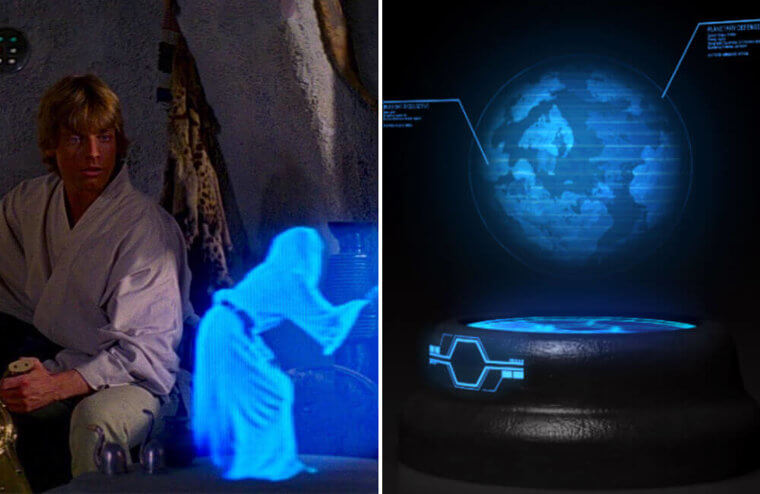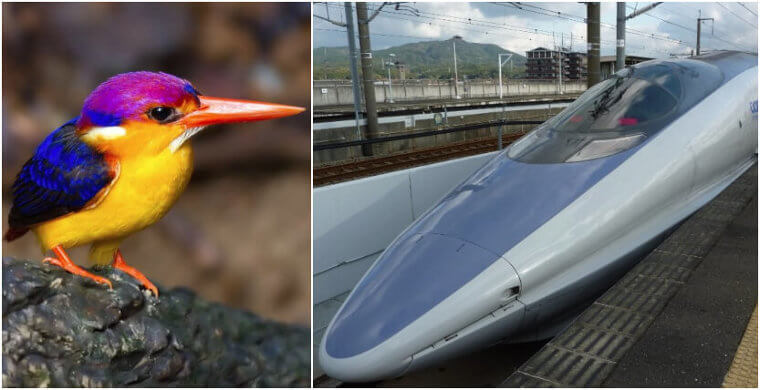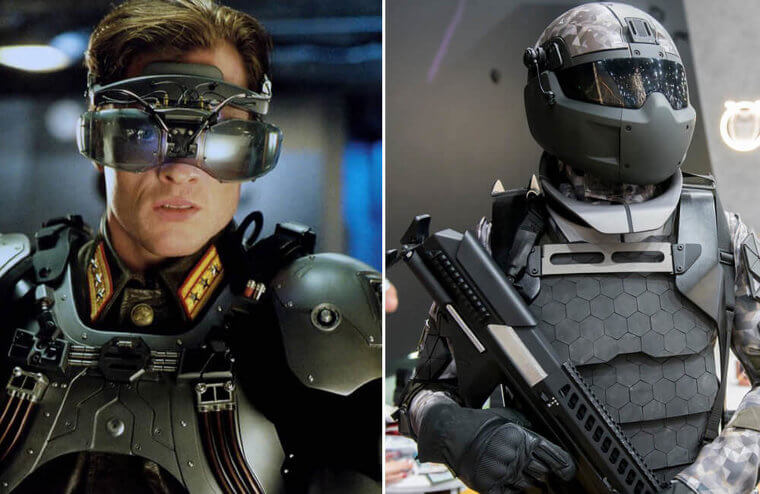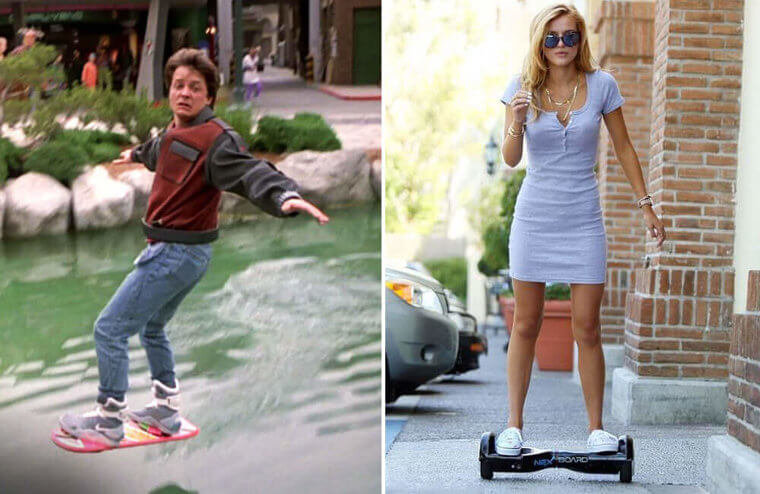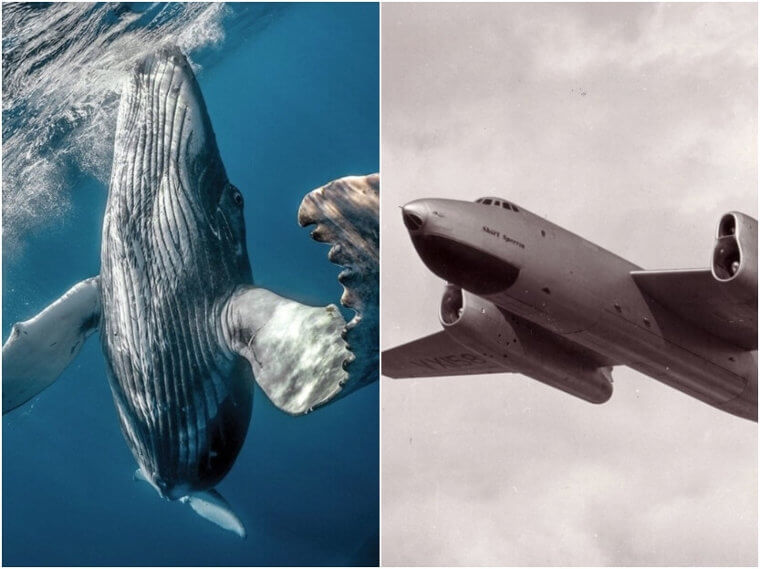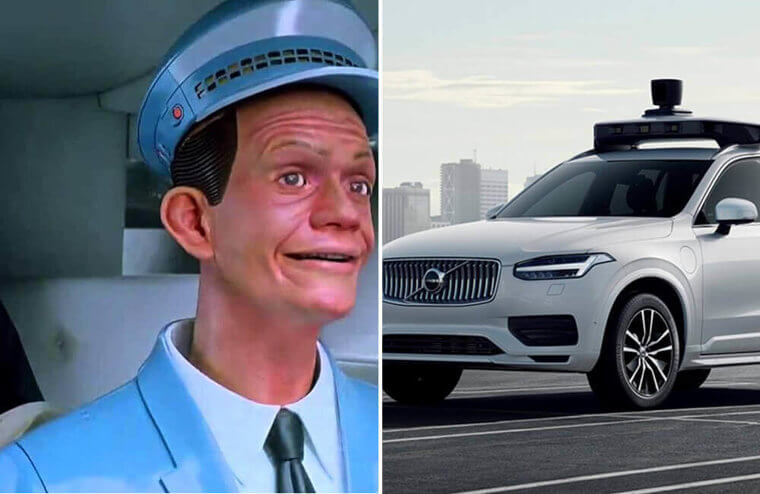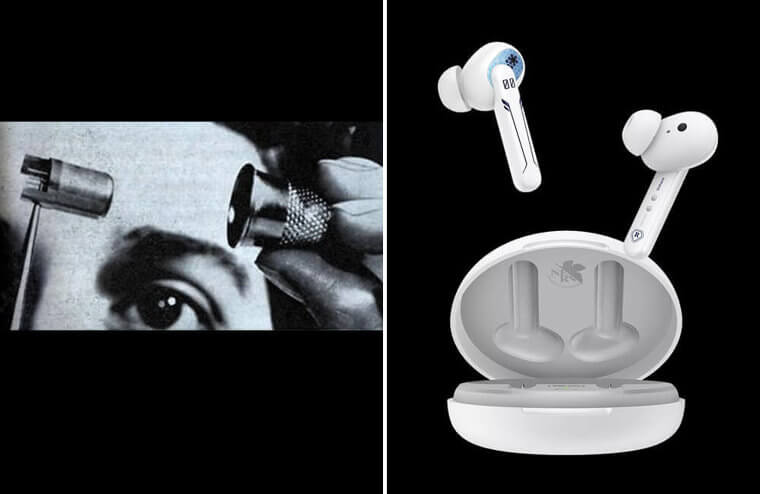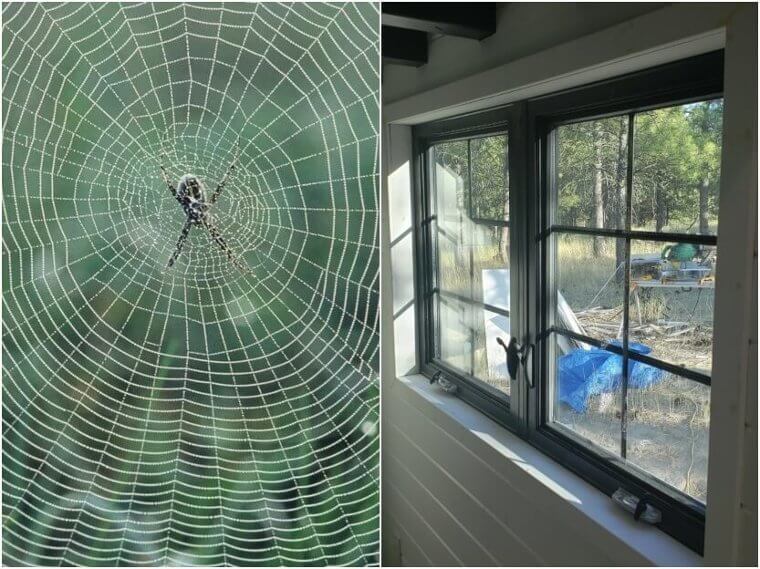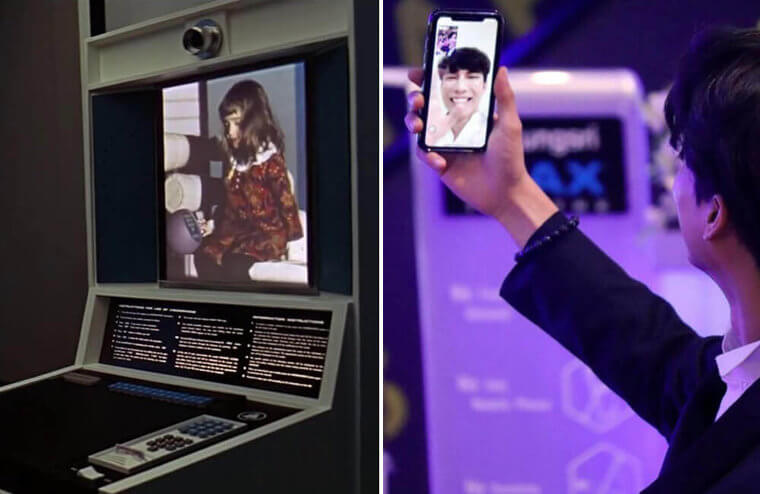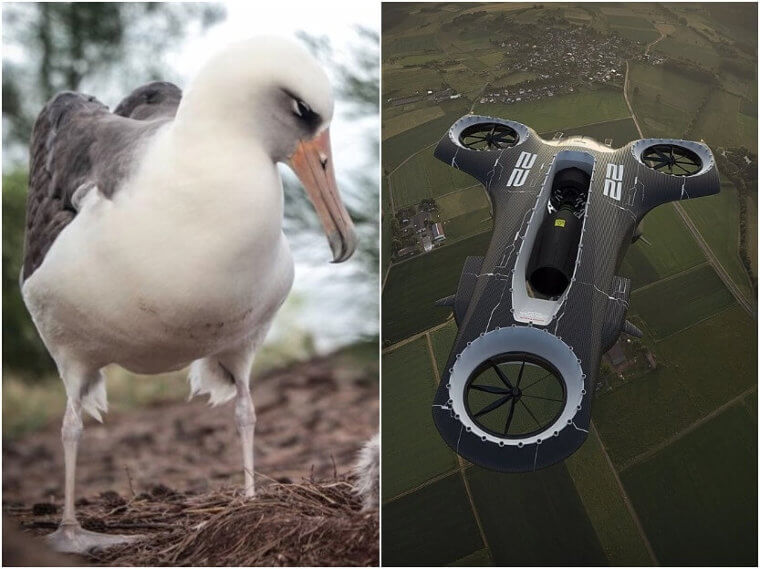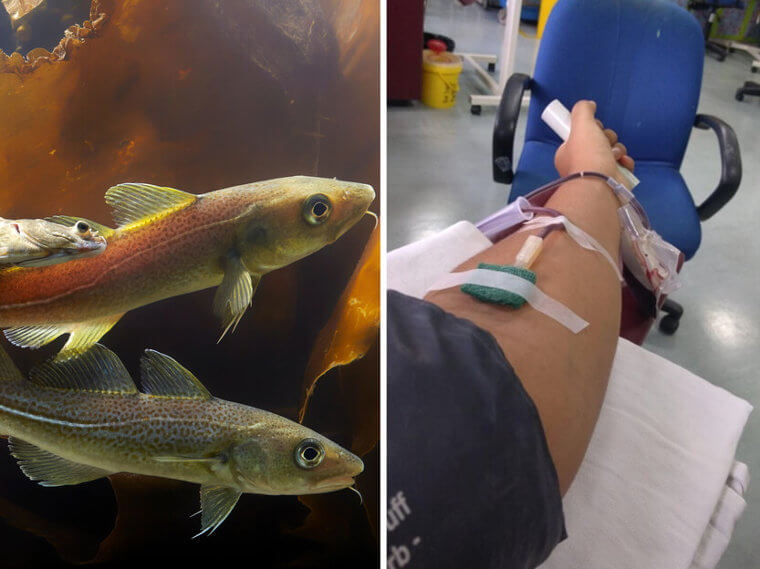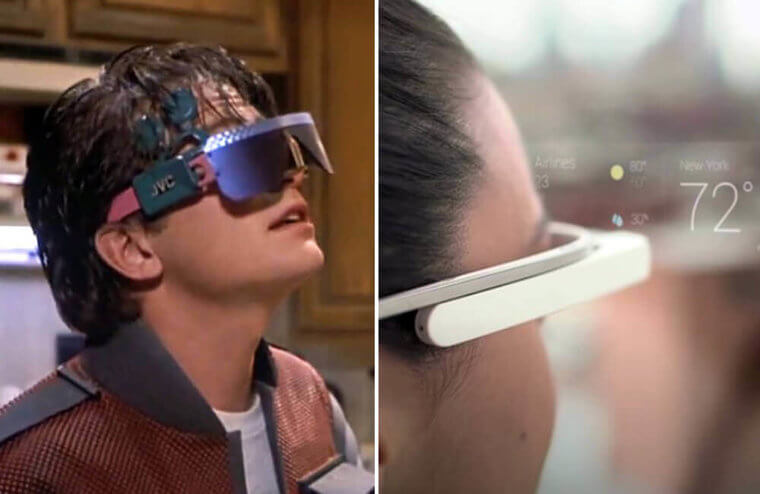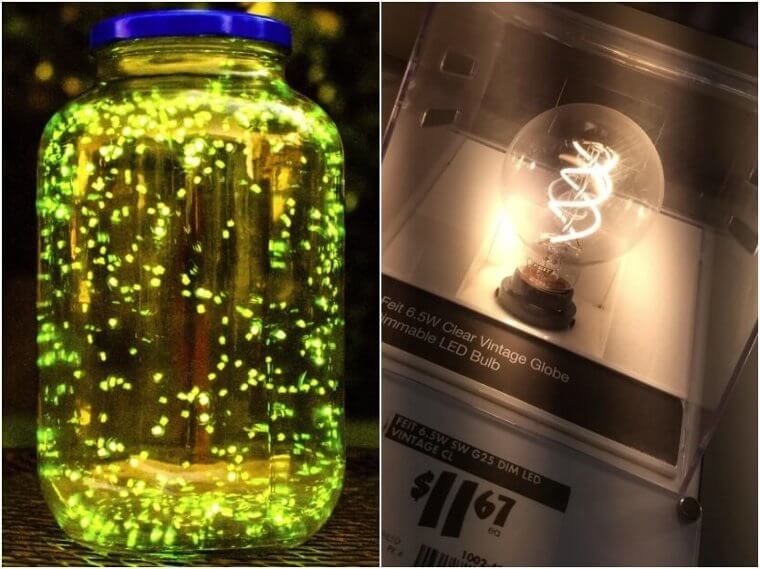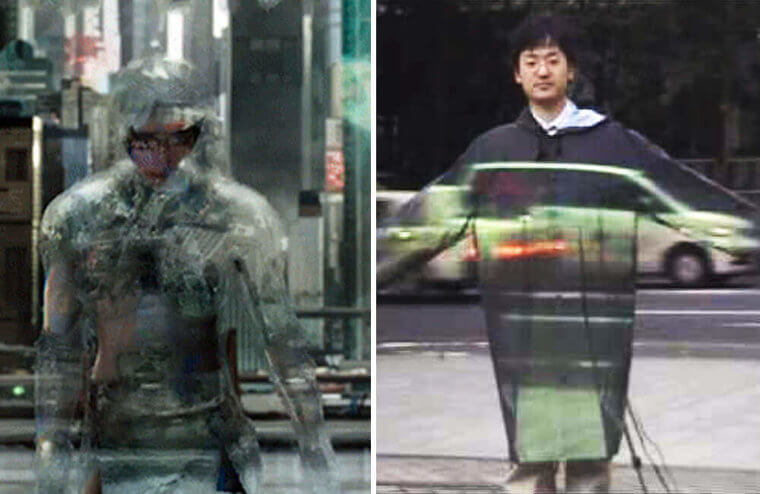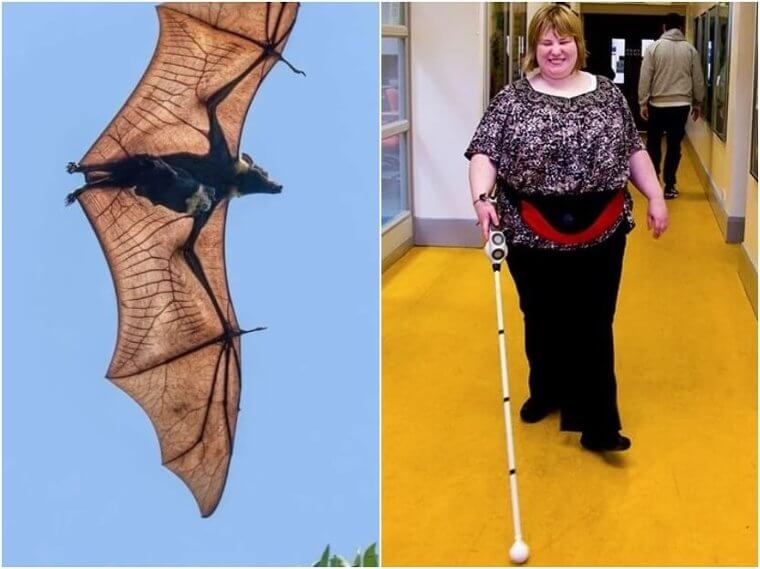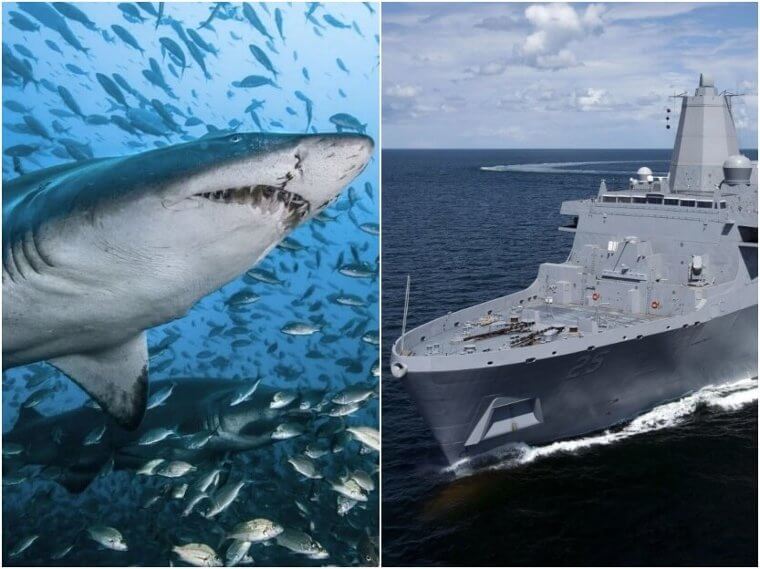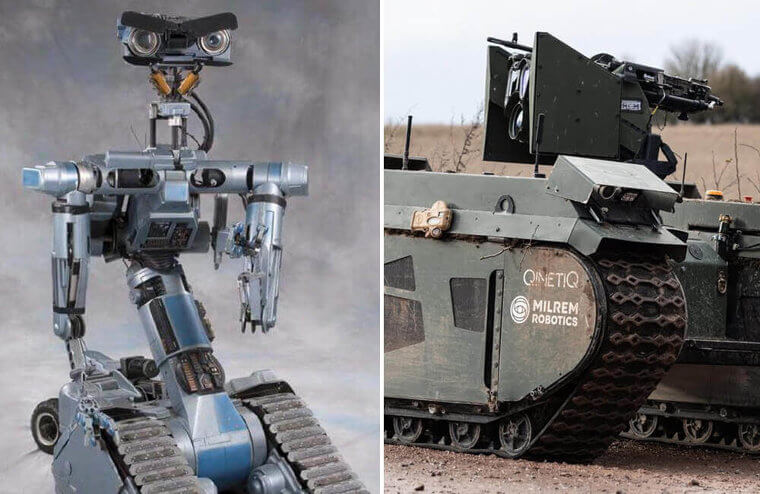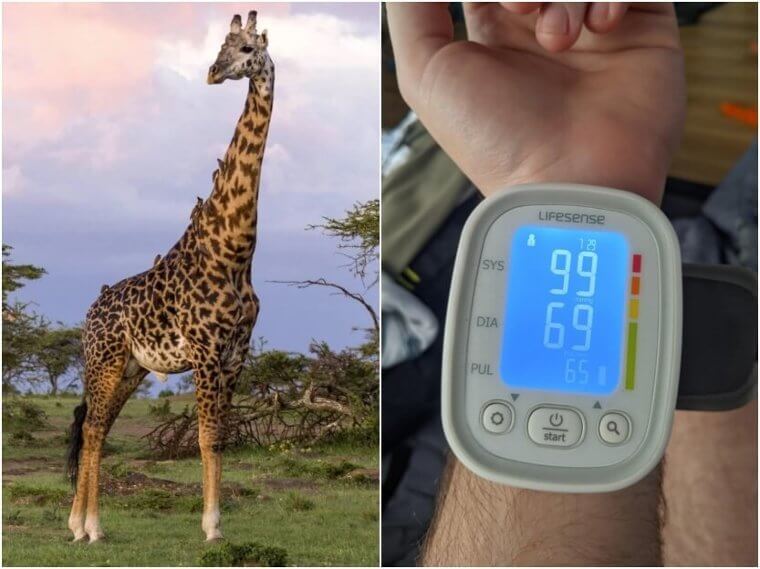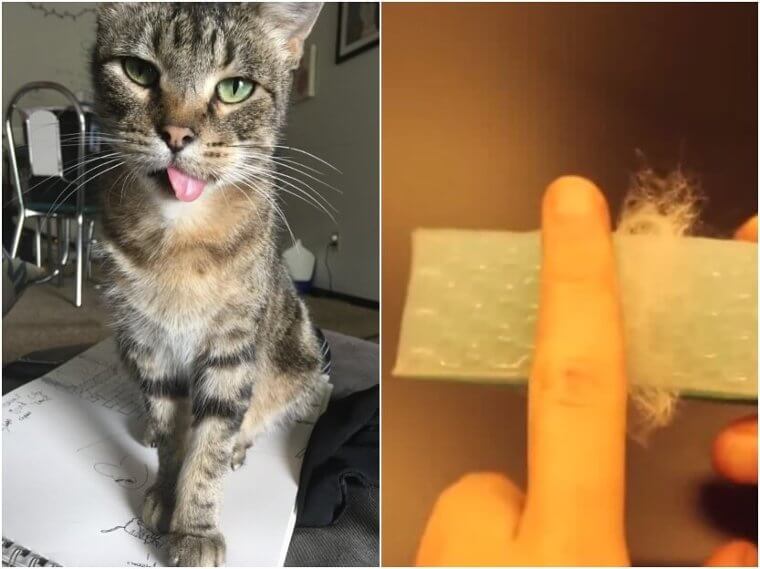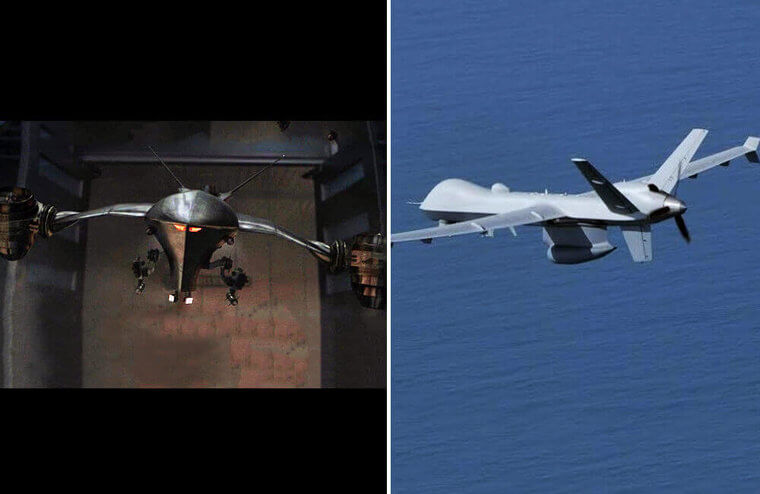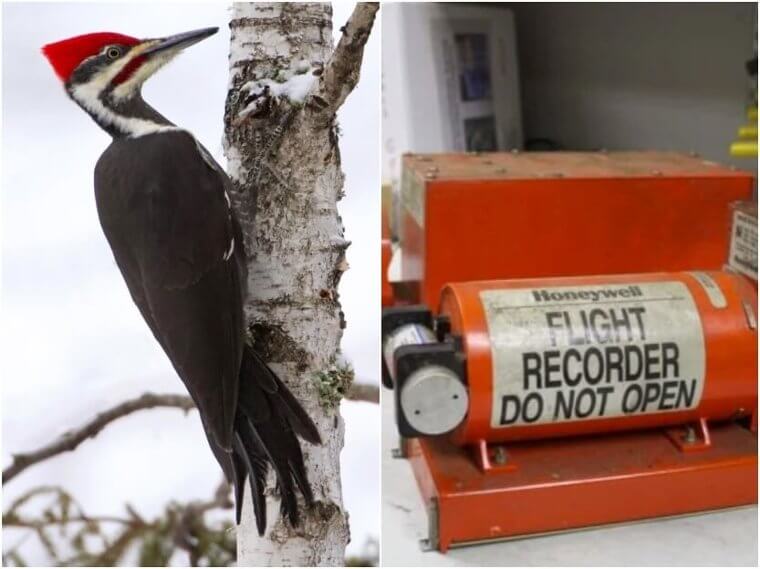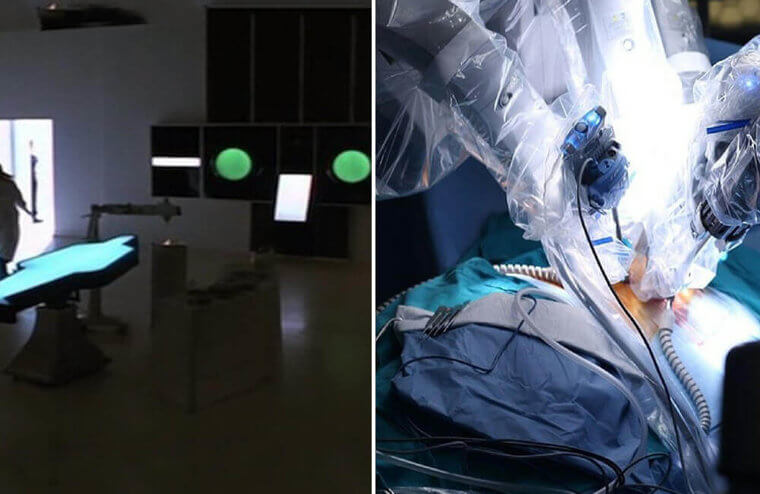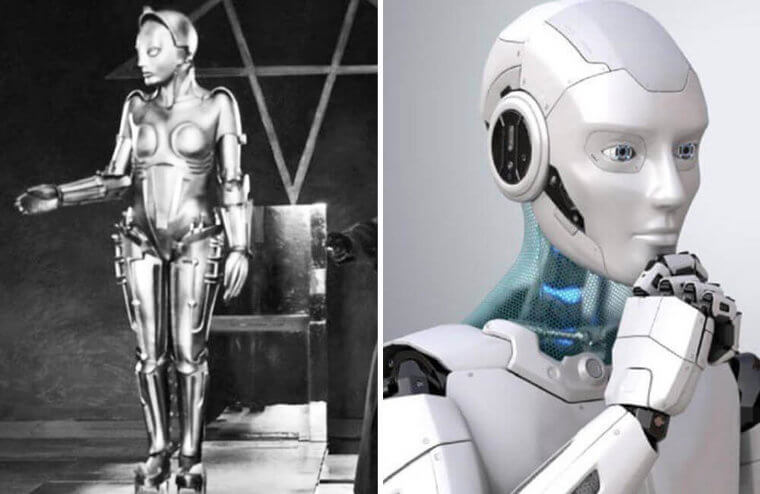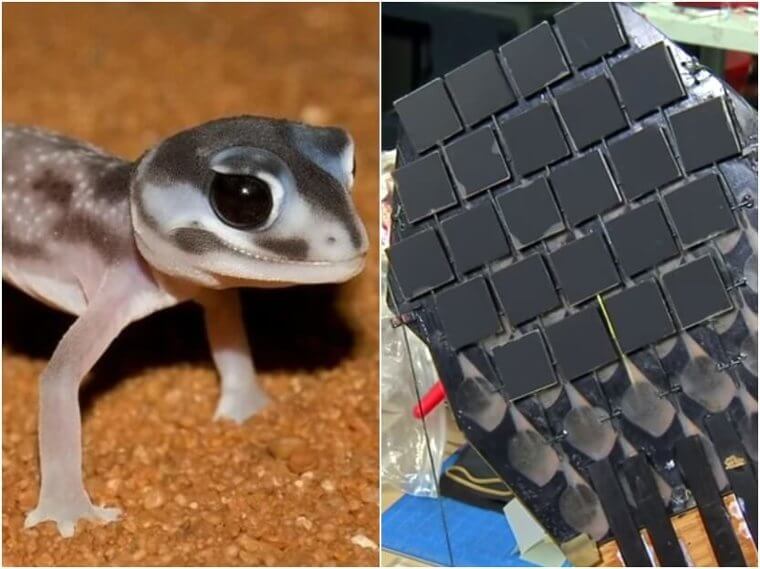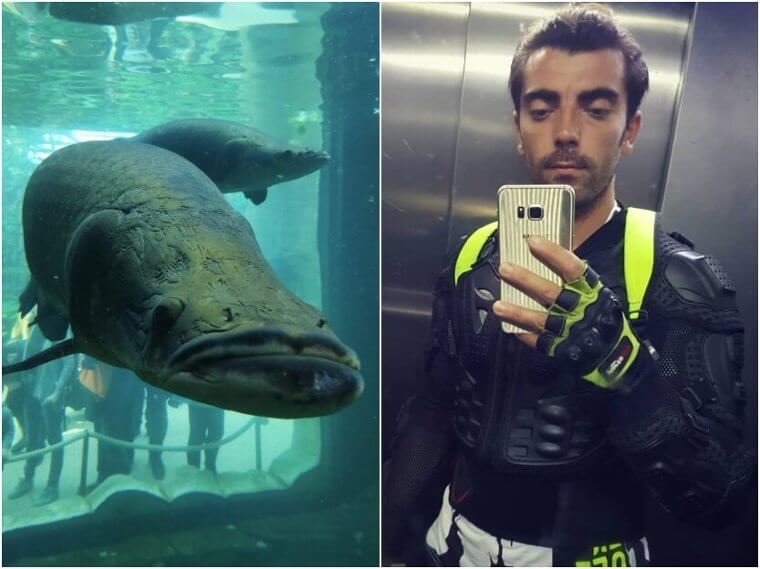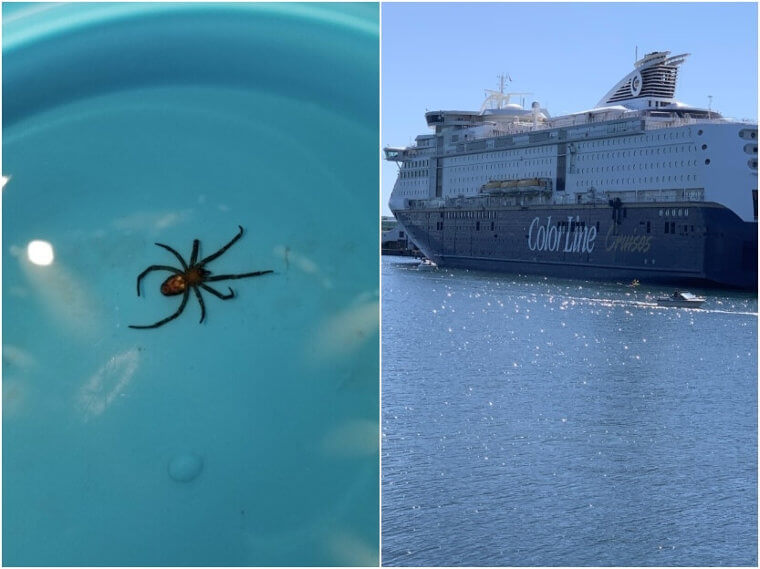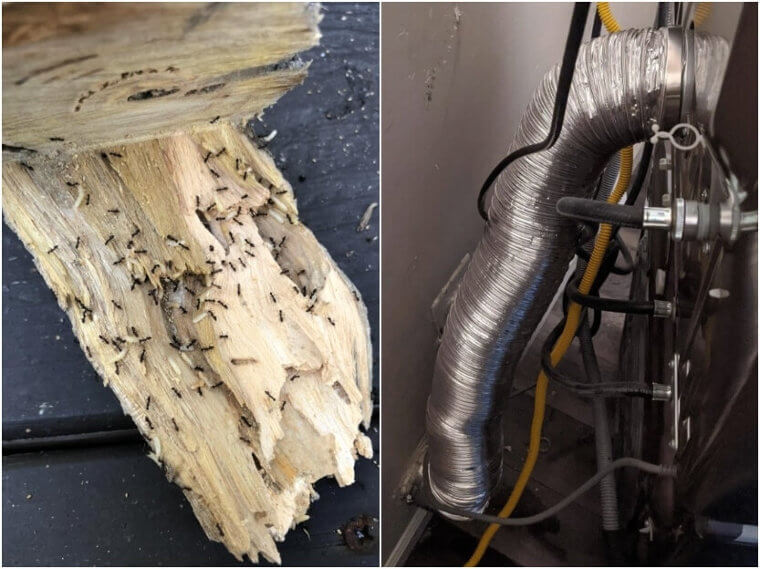Mussels – Adhesives
Mussels aren't something we think about regularly unless you work in a seafood restaurant. They stay out of sight and live under the water, but they have made a huge contribution to science. When scientists found a breed of underwater mollusks that could latch onto wet surfaces, they wanted to recreate that with modern glue.
They used mussels as a blueprint to create an adhesive that stuck to surfaces ten times better than anything else on the market. Inspired by the mussels' amino acid makeup, scientists engineered a biomimetic polymer. Who would have thought that these guys could be so influential?
Airplane II — Body Scanners
While the movie Airplane II was hilarious, it also had some ideas that were ahead of its time. The film was released in 1982, and most elements seemed out of this world. However, one idea wasn't that far away from being invented and implemented at airports worldwide.
By 2009, almost every airport had full-body scanners. In the wake of the 9/11 terrorist attacks, security measures for flying were significantly increased, and scanners had to be implemented to prevent something like that from happening again. Each unit costs around $170,000, but it's better to be safe than sorry.
Camels – Water Purification
When you think of camels, you probably envision them somewhere in the desert because that is their natural habitat. However, how is an animal that needs water to survive so well able to last in those dry conditions? When camels do drink water, they drink about 20 gallons at a time and have a unique process to make it last longer.
Camels recycle their own exhaled air at night: first by cooling it, and then absorbing it back once it’s mixed in with the atmosphere again. Researchers used this method to invent a water purification system that removes salt from saltwater to make it drinkable. This has helped everyone, from farmers to those who don't have access to fresh water.
Hummingbirds – Helicopters
Like hummingbirds, helicopters also have the ability to hover in place, and we wonder where they got that idea from. Helicopter engineers are always looking to improve designs, and they continue to take pro tips from the quick and agile hummingbird.
After researching 12 different species of hummingbirds, researchers from Stanford found that the more prominent their wings were compared to their body gave the more power they had. This helped improved the agility of helicopters, and they continue to advance their technology based on extensive research.
Peregrine Falcon – B2 Bomber
While the picture pretty much speaks for itself, we can clearly see how birds have such a powerful influence on technology, especially plane designs. Engineers have done their best to imitate our friendly neighbors in the sky, but nothing compares to the inspiration taken from the Peregrine falcon.
While it is not only visually similar, the B-2 Bomber was designed in a way to make it so fast and aerodynamic like the falcon. The drag was reduced, and it made the plane soar through the air seamlessly. These two are both masterpieces, one by nature and one by science.
Blade Runner — Digital Billboards
If you walk through any big city like Manhattan, you will see digital billboards all over the place. However, in 1982 when Blade Runner was released, the digital billboard in the movie were years ahead of their time. It was set in 2019, and now we know that some of the technology has yet to come true.
Digital billboards were first released in 2005, and they made advertisements much more exciting to look at. They also changed the visual landscapes of New York and other major cities. We wonder if any of the other Blade Runner technology predictions will come true.
Elephants – Bionic Arms
Elephants are some of the most majestic creates, and their trunks are a novel spectacle. However, did you know that an elephant trunk has 40,000 muscles and no bones? While they mainly use their trunks to smell, breathe, trumpet, drink, and grab things, it can also be a weapon with all that muscle power - the possibilities are endless.
Using research about elephant trunks, German scientists developed a bionic arm. Thanks to a company called Festo, people who need bionic limbs have benefited strongly from their products. However, we can't forget to give credit to the ones who really made these bionic limbs possible, elephants.
Sea Otters – Wetsuits
While we may think that they are freezing, sea otters actually prefer swimming in cold waters, but how do they comfortably hang out in those harsh conditions. Sea otters have some of the warmest fur in the world, which made researchers from MIT start a project to mimic otter fur in wetsuits.
Based on research about their fur, engineers designed wetsuits with small, furry, rubbery pelts as otters have. The pelts trap pockets of warm air within the fur to maintain a sense of heat all the time. Now divers can explore colder waters thanks to our cute and cuddly furry friends.
Star Wars — Holograms
Holograms have always been intriguing to inventors for decades, and they have been featured in many movies, including Star Wars. The film helped holograms become more popular and inspired a technological feat in 2017.
An Australian-based company called Euclideon made its own multi-user hologram table, allowing up to four users at a time. While there are still some things to smooth over, it is a massive step into the future and shows how movies can be so influential.
Kingfishers – Trains
Besides their beautiful colors and adorable small bodies, kingfishers were the sole inspiration behind modern high-speed trains. A Japanese rail company wanted to make trains faster, and they looked to the kingfisher for a solution to create a train that wouldn't be so loud when exiting a tunnel.
An engineer at the company was bird-watching when he saw the kingfisher and found a way to fix the problem. He created a train model with a longer and sleeker front like the kingfisher's beak, and the result was impressive. While exiting a tunnel, the air can easily move over the aerodynamic design and creates less noise.
Die Another Day — Active Camouflage
People have been fans of the James Bond movies for decades. Not only is he smooth with the ladies, but he also has the coolest gadgets. One of his many gadgets from the 2002 film Die Another Day was so unique that engineers decided to bring it to life.
Bond's Aston Martin is equipped with active camouflage made up of cameras to appear invisible. While the idea isn't fully ironed out, there has been significant progress in the field. In 2010, an Israeli startup called Eltics made prototypes for active camo, and they look promising.
Back to the Future II — Hoverboards
If you have seen people rolling around town on hoverboards, you can thank Back to the Future II for inspiring this absurd invention. The movie version was this cool thing that actually floated off the ground, and while we don't have the exact same thing, it is as close as we can get right now.
The hoverboards we currently have might be a stepping stone to boards that fly. At the moment, we are stuck with these dangerous things that have been known to explode from time to time. While the technology is incredible, it is still strange to see people using these.
Humpback Whales – Wind Power
Humpback whales are one of the biggest creatures on earth, and despite their massive size, they actually move quite quickly. Their exceptional fins help them glide through the water with maximum momentum. Because of this incredible power, scientists studied the bumps on their fins, known as tubercles to unlock the key to their power.
A company called whale power learned that tubercles provide a 32 percent drag reduction and a 40 percent increase of attack with smooth flippers. This information helped improve the performance of propellers in airplanes, fans, and other wind-related tools.
Total Recall — Self-Driving Cars
It seems that Arnold Schwarzenegger wasn't afraid to take on futuristic roles throughout his career. In Total Recall, Schwarzenegger was seen in a car called a "Johnny Cab," which has a robot driver instead of a human. Today, we are seeing more and more vehicles with auto-pilot.
Self-driving cars have been in the works for over a decade now, and many companies are continuing to experiment with this technology. Through Tesla, we have seen that there are many kinks to work out, but it is incredible how automated everything is becoming.
Dogs – Velcro
Dogs really are a man's best friend, and one special pup helped create velcro. While hunting with his dog in the forest, Georges de Mastral noticed the remarkable way his dog's fur stuck to burrs. It made him so curious that he decided to examine the burrs and dog hair under a microscope.
Mastral noticed that the burr's toughness and the dog's soft hair allowed them to stick together effortlessly. He took this idea and recreated it with rough cotton and smooth nylon and put them on a cloth with loops. The next thing he knew, he had created velcro, and the rest is history.
Fahrenheit 451 — Earbuds
There have been many types of headphones for years now, but they have always been bulky with wires that tangle easily. In 1966's Fahrenheit 451, the idea of earbuds appeared, but it was years beyond its time. Those wireless earbuds wouldn't appear till the release of Airpods in 2016.
Once Apple release Airpods, every company came out with their own versions, and the days of being tangled in wires were long gone. Each year, wireless earbuds continue to improve, and it's not bad for such a small piece of technology.
Butterflies – Anti-Counterfeit Technology
It may seem like a strange match, but butterflies have actually been beneficial for the economy. There once was a time when counterfeit schemes ran rampant all over the world, and researchers were desperately looking for a solution to this problem. That's when they noticed the interesting way a butterfly's wings change color.
Scientists at Simon Fraser University created a program called NOTES to mimic the butterfly’s nanoscale light-interfering structures. They were able to take that technology and put it on the dollar bill, and it was practically invisible. Thanks to those beautiful creatures, counterfeiters have a much harder time scamming people.
Spider Webs – Glass Windows
There is nothing more uncomfortable than walking through a spider web and nothing more embarrassing than walking into a window. Surprisingly, these two things have a lot in common. Spider webs were made to survive in the wild and withstand anything from birds flying through them, and scientists thought glass windows could benefit from these properties.
Spiders make their webs with ultraviolet silk, so scientists at Biomimicry 3.8 Institute decided to add an ultraviolet coating to their product. They called it ORNILUX Bird Protection Glass, and it protects our windows from our flying friends.
2001: A Space Odyssey — Video Calling
Video calling has become a part of our everyday routines in the past few years, especially since everyone started working from home. However, there was a time when the idea o video chatting seemed like a futuristic, far-off idea.
In 1968, when 2001: A Space Odyssey showed the importance of video calls, people probably laughed at the idea. While the technology was already in the works that same year, it wouldn't become commonplace until a few decades later. It was also mentioned in a few other movies like Back to the Future and Metropolis.
Albatrosses – Drones
The albatross is a majestic bird with the ability to soar through the sky effortlessly. Researchers have always marveled at the way they rarely flap their wings to conserve energy. The albatross flies around 600 miles per day, and they rarely get tired. Therefore, engineers were curious about this ability and how it could advance technology.
MIT researchers decided to work on a drone that would fly and conserve energy like the albatross. They planned to create a fixed-wing drone, relying heavily on wind power. This technology would help drones fly longer without needing to be charged, and they can possibly fly overseas.
Codfish – Blood Conservation
While researching Arctic codfish, scientists discovered that cod could survive multiple seasons of icy water because they possess unique antifreeze proteins in their bodies. It is called glycoprotein, and it helps the blood stay liquid instead of turning to ice.
It inspired researchers at Warwick University to create a molecular substance that would do precisely the same for blood bags that get conserved at blood banks. Blood bags are usually held on ice, and this special Polyvinyl alcohol can help prevent blood cells from freezing during transportation.
Back to the Future II - Google Glass
In the 1985 classic Back to the Future II, Marty McFly and doc go into the future where they see all this exciting technology, and many of those inventions have come to life, like the Google Glass. Marty finds glasses that can be used to communicate, and the people at Google were clearly taking notes.
If you fast forward 30 years, people in Silicon Valley could be seen sporting similar glasses that could relay voice commands, among other functions. Although the idea never fully took off, it was still an incredible advancement in technology.
Mosquitoes – Surgical Needles
Although they carry deadly diseases and sneak up on you without you knowing, we all have to admit that mosquitos are quite efficient at their job. We never feel them sucking our blood, and we only find out when the itching feeling begins. Japanese researchers were so intrigued by this idea and wanted to recreate it.
They ended up creating a three-pronged needle that vibrates slightly as it enters your skin like a mosquito does. Thanks to the deadliest insect in the world, the doctor's office isn't so frightening.
Fireflies – LED Light Bulbs
If it weren't for LED lights, our lives would be much darker...literally. Most people don't realize that these lightbulbs were inspired by something we try to catch during the summer months. Fireflies have a microscopic projection of light or microstructures, and a study showed that they are uniquely asymmetrical.
Penn State University researchers discovered that LED lights by mimicking the asymmetrical microstructures created by fireflies. It improved the light distribution by 90 percent, and everyone can appreciate that level of improvement. Therefore, you can thank all those glowing fireflies for incredible lighting.
Ghost In The Shell — Retro-Reflective Projection Technology
Although Ghost in the Shell was released after the technology in this situation, no one knew about the project until the film's release. Retro-Reflective Projection Technology is an active camouflage, and the idea has been seen in many films throughout the years.
Japanese scientists have been working on the technology since 2012 but have yet to bring the idea to the market. These materials could be effective for the military, but they still need more time to improve the RPT materials.
Bats – Walking Sticks For The Blind
While hanging out around Leeds University in England, a group of professors came up with the idea for the Ultracane. The cane is made for the visually impaired, and it vibrates when it gets close to another object. This increases their safety tremendously, and it works like a bat's echolocation to sense their surroundings.
It lets out 60,000 vibrations per second, and the film is highly intuitive and can sense objects from every angle. Between fire hydrants, trash cans, revolving doors, and anything else, the cane can help the blind like never before.
Sharks – U.S. Navy Ships
Sharks are incredibly powerful creatures, and it is no wonder that the Navy would take some inspiration from them. The US Navy was looking for a solution for the barnacles on their ships, and they noticed that sharks never get them because of their sharp V-shaped scales.
These sharp scales help sharks get rid of any organisms that try to attach themselves to the shark's skin. It wasn't long before the US Navy picked up on this technology and created the Sharklet, an innovative material that prevented substantial marine growth. This has helped the ships become faster and more efficient.
Short Circuit— Military Robots
When it comes to militaries worldwide, the biggest tragedy is human lives lost. In 1986's Short Circuit, the film featured an experimental robot given a conscience when hit by lightning. Since the film's release, there have been major advancements in AI technology, especially with military robots.
Introduced in 2002, these "robots" might not be alive like the ones in the movie, but they have been very useful tools. From the military to everyday life, this type of technology continues to grow and advance thanks to brilliant minds.
Giraffes – Blood Pressure Sustainability
Giraffes are known for their long necks, and they have a particular purpose. While most people assume it is to help them reach the high branches, it greatly benefits their health. Because of their long necks, their blood has tons of room to roam around and circulate. Scientists took this idea to develop a blood compression therapy system for medical patients.
The arduous and fibrous skin of the giraffe also helps with their blood circulation. The scientists replicated this as well to optimize the flow of their system even further. It was beneficial for hospitalized patients with leg ulcers and edema.
Cats – Cat Hair Brush
Would you believe that cats helped scientists find a solution for all their shedding hair? When you have a cat, their hair gets onto everything, and it is so challenging to keep up with cleaning. Although grooming brushes have been around for decades, they never did the job perfectly.
Using what they knew about cat tongues, researchers invented a brush with the same microscopic curved spines known as papillae. The innovative brush didn't look like a regular brush, but it was remarkable at cleaning cat hair. Instead of letting your bet get hairballs, this is the solution to that problem.
The Terminator — Military Drones
While The Terminator might seem like a movie that couldn't be further from reality, it was strangely predictive. Although there haven't been cyborgs visiting us from the future, the movie feature weaponized drones that have become part of everyday life.
Drones similar to these have been around since the '80s, but they became more widely used during the 2000s in the Iraq war. The drones continue to be valuable to armies all over the world, and by 2025, they will have an estimated market value of $26.8 billion.
Woodpeckers – Black Boxes
Have you ever wondered how woodpeckers smash their faces into trees without getting hurt? If a human crashed their head into a tree relentlessly, they would be brain-damaged. However, woodpeckers are born with shock absorbers, and scientists were interested in those abilities.
After conducting CT scans on woodpeckers at UC Berkley, researchers found that the inside of a woodpecker's beak is filled with a spongy and cerebrospinal fluid, which helps them absorb the contact. They took that idea and transferred it to black boxes on airplanes. The black box records flight records, and because they are prone to shaking and pressure, it needs that shock absorption to protect it.
Cicadas – Antibacterial
You might have heard these large bugs if you live in a quiet suburban neighborhood. During the summer, we hear them, but we never see them; however, they have helped advance science. Their wings hold special antimicrobial properties that researchers have studied thoroughly.
Researchers found that cicada wings destroy bacteria instantly. It was the first-ever natural biomaterial discovered to do this, and scientists aimed to replicate it into technology that could be placed on surfaces around the city. From bus stops to subway stations, the world could be cleaner thanks to these bugs.
Sleeper — Robot-Assisted Surgery
Many great minds spent years with their noses in books to become some of the best surgeons globally. However, any good doctor would honestly tell you that the advancements in technology have greatly helped the medical field. The 1973 film Sleeper, featured robot-assisted surgery, and it seemed like an impossible idea.
However, by 1985, this idea was taken from the screen and implemented in hospitals. It wasn't exactly like the movie depiction, but these days, surgeons use the help of robots in procedures all the time. This technology has saved many lives.
Metropolis — Robots
The 1927 film Metropolis featured a female robot created by scientists, and at the time, the idea was intriguing but seemingly impossible. However, it was only a matter of time before this technology jumped off the screen and into the real world.
The first robots were initially released in 1954, but the technology was nothing like it is today. Now, we have robots that are so life-like, and they come in all different shapes and sizes. It is no surprise that the market value for robot technology is so high.
Geckos – Military Climbing
Whenever you see a gecko, you probably notice how well it can climb on almost any surface. They effortlessly climb on walls and ceilings because they have the ability to stick to anything with their toe pads, and researchers were intrigued by this ability.
Scientists found that geckos have minuscule elastic hairs on their feet, which allows them to climb on this without falling. Engineers took this idea and implemented the concept into technology-based around suction cups. They ended up making a product that US soldiers use to help them scale walls.
Demon Seed — Smart Homes
Raise your hand if you would be lost without all the helpful gadgets around your house. We are right there with you, but there was a time before many of these devices existed. In 1977, Demon Seed showed the world what would happen if a smart home turned on the user, and it was not a good outcome.
While the idea is terrifying, especially after seeing Disney Channel's Smarthouse, many of those smart devices are more useful than murderous. Between Amazon Echo's and other unique gadgets, our homes will start doing all the work for us one day.
Arapaima Fish – Body Armor
While this fish might look like it would eat anyone that gets near it, the Arapaima fish helped the US Air Force. After studying this fish's behavior and how it defends itself against lethal piranhas, they found that the Arapaima has a rigid, steel-like outer shell to protect itself.
For millions of years, the fish's scales have evolved for the sole purpose of surviving attacks, and scientists took this idea to improve airplanes and unbreakable bodysuits. Next time you see one of these fish, thank them for their contribution to the modern world.
Spiders and Ants – Unsinkable Metal
Talking about unsinkable metals and cruise ships might be a sore subject because inventing an unsinkable ship seems nearly impossible. However, scientists have gotten pretty close thanks to what they have learned from spiders and ants.
Researchers found that ants and spiders trap pockets of air bubbles within a self-made underwater dome, which allows them to float. Using this idea, engineers from Rochester University designed a type of metal that traps air to make it virtually impossible to sink.
Termites – Ventilation
Most people associate termites with destruction, but we have learned a lot from them. As awful as they can be, they are actually very intuitive about creating architectural designs. For example, they can stay cool in Africa's sweltering heat, which is because of their well-designed mounds.
Engineers have been fascinated by this ability, and they used what they learned from termites to improve ventilation systems. They placed a central hole in the middle of a system like termites do to provide cool air while conserving energy.

